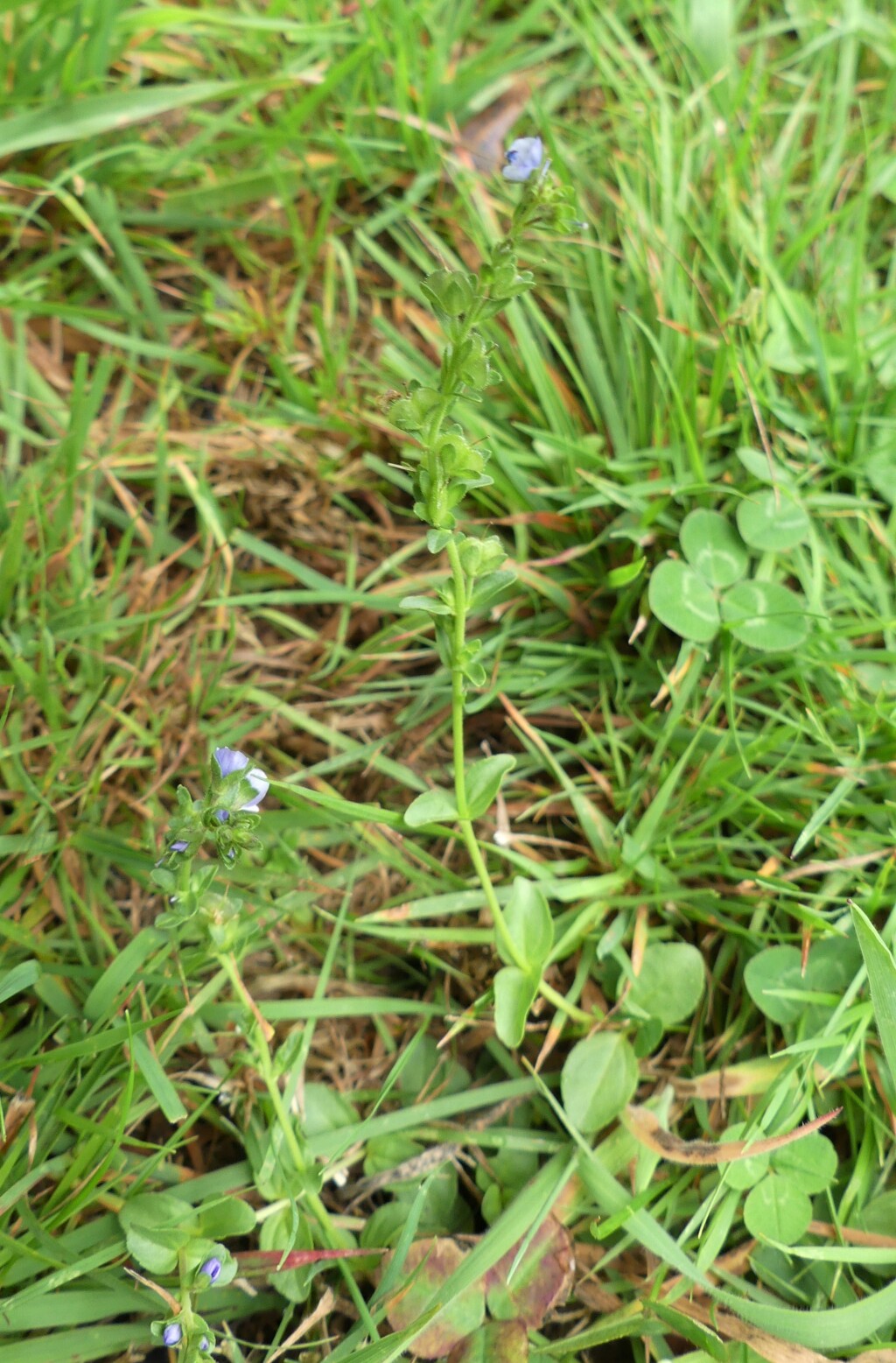Veronica serpyllifolia
L. Thyme SpeedwellProstrate to erect rhizomatous perennial herb to c. 10 cm high; stems often rooting at lower nodes, with minute antrorse hairs, rarely with spreading multicellular, sometimes glandular hairs. Leaves sessile or subsessile, broad-elliptic, mostly 4–16 mm long, 2–11 mm wide, apex obtuse, base rounded, margins minutely crenate, glabrous or with minute antrorse hairs. Flowers solitary in the axils of leaf-like bracts; pedicels 1–4.5 mm long. Calyx-lobes 2.5–6.5 mm long, 1–2 mm wide in fruit, glabrous or sparsely ciliate; corolla 2–4.5 mm long, white (with or without purplish veins) or pale blue with purplish veins. Capsule oblong, 2.1–4 mm long, 2.5–4.6 mm wide, emarginate, sparsely ciliate around margin; style 1.3–3 mm long. Flowers spring and summer.
VVP, VRiv, GipP, CVU, NIS, EGL, EGU, WPro, HSF, HNF, OtR, Strz, VAlp. Also Qld, NSW, ACT, Tas. New Zealand, Europe, western Asia. In Victoria mostly in moist peaty soils, soaks and along stream margins, in montane to alpine areas, Portland district and Otway Range, occasionally a weed of well-watered lawns and gardens (e.g. Trentham, Trafalgar, Melbourne suburbs).
Victorian occurrences of Veronica serpyllifolia may include both native and naturalised elements. Plants in alpine and subalpine sites on the Bogong High Plains and Mt Buller (also Southern Tablelands of New South Wales) may be native. These resemble V. serpyllifolia subsp. humifusa (Dicks.) Syme in the spreading glandular hairs on the inflorescence axis, but differ from that subspecies (as it is recognized in Europe) in the more erect habit and in having mostly more than 18 flowers per raceme (c.f. 8–15 flowers for subsp. humifusa). Plants with shorter, antrorsely curved, non-glandular inflorescence hairs appear referable to the typical subspecies and are probably naturalised at both high and low elevations. Further work is required to determine the correct placement and origin of the two entities.
Briggs, B.G.; Barker, W.R. (1999). Veronica. In: Walsh, N.G.; Entwisle, T.J., Flora of Victoria Vol. 4, Cornaceae to Asteraceae, pp. 509–516. Inkata Press, Melbourne.
 Spinning
Spinning

